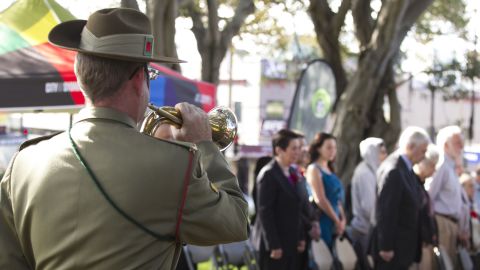A descendant of the original lone pine tree in Gallipoli has been planted in Glebe’s Foley Park, to commemorate the centenary of Anzac.
Lone pines once grew wild across the Gallipoli Peninsula but were removed by Turkish soldiers before the Gallipoli landing in 1915, leaving only one lone pine standing.
The City of Sydney is marking the centenary of the Anzac landings by planting the pine tree that is a descendant of the lone pine that stands in Canberra, grown from cones Australian soldiers sent back from Gallipoli’s solitary pine in 1915.

The lone pine received its name when Turkish soldiers cut down all but one of the Aleppo pines that covered Plateau 400. They were defending the plateau and used the felled trees to cover their trenches. ‘Lone Pine’ was the scene of some of the fiercest fighting and bloodshed of the Gallipoli campaign.
One of the Australian soldiers killed at Lone Pine was a young Australian, whose brother, Lance Corporal Benjamin Smith sent a cone from the tree home to his mother at Inverell.
She kept the cone for 12 years before planting its seeds, producing two seedlings. One was presented to the town of Inverell, and the other planted by the Duke of Gloucester, at the Australian War Museum in 1934.
The new lone pine in Glebe is a descendant of that majestic lone pine at the Australian War Memorial, which stands over 20 metres tall.



